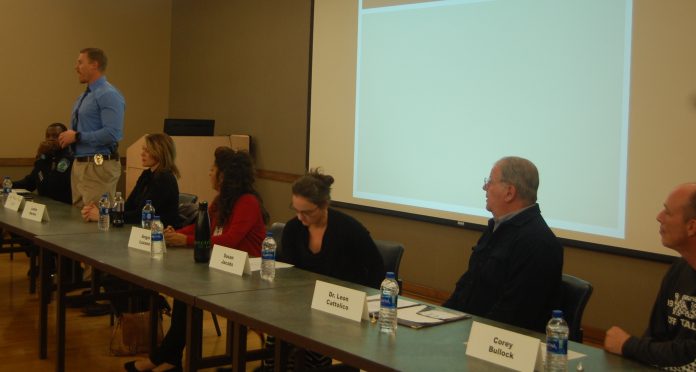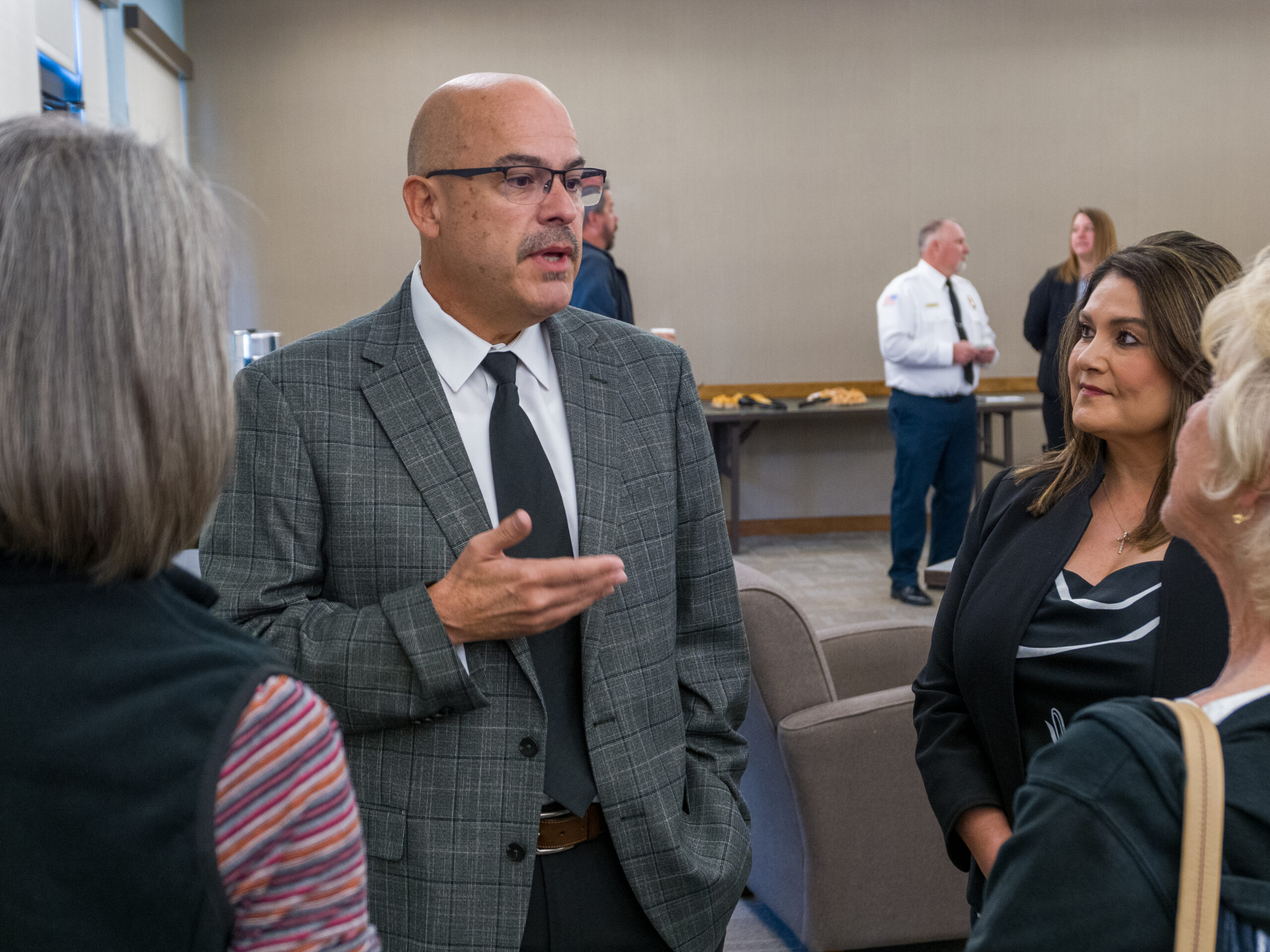The opioid crisis remains a top public health concern, both nationwide and in the Verde Valley. According to the Centers for Disease Control, opioids were responsible for 47,600 deaths in 2017, the most recent year with nationwide data. Public health officials in Yavapai County feel they are making progress fighting the drug epidemic — in 2017 there were 44 overdose deaths in Yavapai County, according to Yavapai County Community Health Services, while 2018 numbers seem to be under 30—but also see a lot of work still needing to be done to combat dangerous drug use.
To educate the public on one of the acute threats in drug prevention, a panel of public health and law enforcement officials held a public information session at the Cottonwood Recreation Center on Jan. 28. Former Cottonwood City Manager Doug Bartosh served as moderator, joined by Cmdr. Gareth Braxton- Johnson and Sgt. Kevin Murie of the Cottonwood Police Department, Leslie Horton, Yavapai County Community Health Services, Angie Lozano of Angie’s House, Susan Jacobs of Spectrum Healthcare, Dr. Leon Cattolico and Corey Bullock, a former addict, who discussed his experiences.
“It’s been an epidemic that’s taken now more lives than traffic accidents have across the country, so it’s important that we sit down and talk about this,” Bartosh said to start off the discussion.
The panel focused specifically on the rise of fentanyl, a particularly strong synthetic opioid that has seen its use and sales rise in recent years. Though fentanyl is not as common in Yavapai County as other drugs such as heroin or methamphetamine, its high potency — estimated to be 100 times stronger than morphine — and high likelihood of leading to overdoses make public health officials view it as aparticularly dangerous threat worthy of extra community awareness.
“It’s a different world out there,” Horton said “To have a pill that is so potent that it could kill you in just one pill is a whole lot different than probably when we were children or young adults and an overdose meant taking a lot of drugs in most circumstances. And now there is a drug out there that could kill you with just that first try. And there may not be something out there to revive you.
“So I think with fentanyl, carfentanil [a stronger fentanyl analogue] and high doses of heroin it’s a different world out there for the kids now.“
Since 2016 there have been at least six overdose deaths related to fentanyl in Yavapai County, including one in the Verde Valley, according to Merilee Fowler of MATForce, a substance abuse nonprofit in Yavapai County.
The panelists highlighted the recent cases of Gunner Bundrick and Jake Morales, two Prescott Valley 19-year-olds who recently died after taking fentanyl mixed with another drug, shocking many in their community.
“One strategy that we really have to be careful is that people who might not even have a use disorder but are recreationally taking a drug to get high on a weekend or whatever — there’s extreme danger for that, because there’s always that possibility that that — whether it’s cocaine or whatever — could be laced with fentanyl,” Fowler said. “Education is extremely important — that people realize that’s a possibility in what’s happening now in the illicit drug trade.”
Many of the panelists praised Naloxone — a nasal spray drug used in the case of an overdose — as a major positive step in helping to deal with the problem. While Naloxone does not alleviate the effects of addiction, it can mean the difference between life and death for users who overdose.
Yavapai County Community Health Services have sought to increase access to Naloxone in the community, including ensuring that police, fire and medical staff are trained in its use when responding to calls and are trying to get it in the hands of addicts themselves so they can at least be protected from the worst outcomes.
“I think it’s saved a lot of lives,” Fowler said. “I know a lot of people who have overdosed and their lives were saved because of Naloxone. It’s definitely been a part of the solution.”
Even while they trumpet the effectiveness of Naloxone in preventing overdose deaths — and the effectiveness of medication- assisted treatment in helping addicts to end their reliance on opioids — public health officials see prevention and awareness as still the most important tools in fighting the opioid crisis and see information sessions like the one held at the CRC as an essential part of that.
In recent years, the opioid crisis has moved away from its genesis in prescription drugs coming from health care professionals to a greater focus on street users and those fighting against the epidemic feel that focusing their strategies to fight it on that change is vital.
“It’s not a singular approach,” Braxton-Johnson said. “It’s not just law enforcement, it’s not just education, it’s not the health care professionals or treatment specialists. It’s a combined effort, and each one of those disciplines play a vital role in helping to create that education and awareness and hopefully address this problem from a multifaceted approach. The old adage that you can’t arrest this problem away is very telling.”
Jon Hecht can be reached at 282-7795 or email jhecht@larsonnewspapers.com



